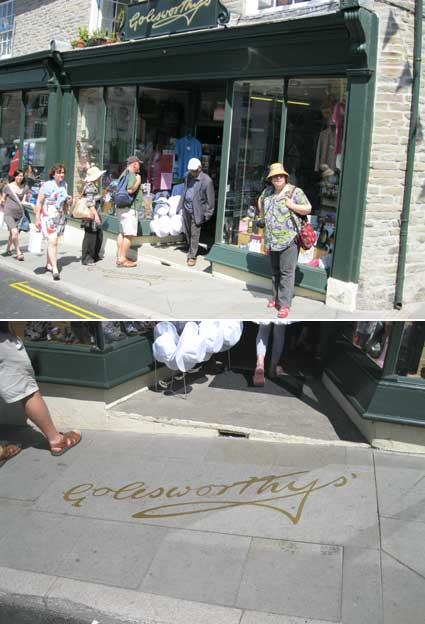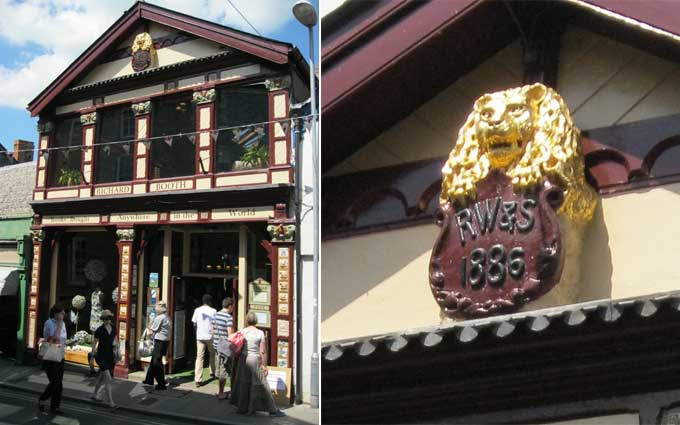'RW&S
1
886'
[UPDATE
15.9.2019: Antony May informs us: 'Richard Booth's Bookshop building
was an Agricultural Hall'; further digging reveals that the hall was
originally built by Robert Williams
& Son (hence
'RW&S'). Anthony nudges us that Richard Booth's father
wasn't a
garage mechanic, as we had said (don't believe everything you read on
the internet), but a distinguished army officer. He is also an admirer
of the Golesworthy shop. Thanks for getting in touch, Antony. We
further read: 'In August 2005, Richard Booth
announced that he was selling his Hay bookshop... The bookshop is now
under ownership of Elizabeth Haycox and has had extensive refurbishment
works carried out since 2009.']
 2011 images
2011 images